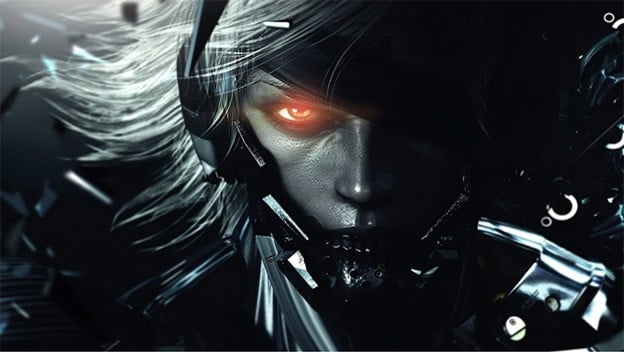All I wanted was for everyone to shut up. I was finishing out a playthrough of Metal Gear Rising: Revengeance, which I’d thoroughly enjoyed for the most part. By this point in the game, though, I was fed up with the theatrics, the obtuse plot line, the posturing between clashing caricatures. I just wanted to get back to the action, back to slicing my foes to shreds with a vibrating katana.
More to the point, though, I wanted the game to stop dancing around its story and just tell it to me.
In writing, there’s a concept called “purple prose,” the idea that someone is being verbose for its own sake. Overly long sentences composed of polysyllabic words impress the reader, right? Or, even if the complexity isn’t there, the descriptions are overly detailed, down to insignificant details that add nothing of value to the work.
Video games, though, are primarily a visual medium. You interact with what you see, and sometimes you watch cinematics or scroll through pages worth of dialogue between those interactions. It may not be prose, but it’s still purple, that’s for sure.
And it’s not really necessary. I know Kojima is noted for his devotion to over-long cutscenes and expositional dialogue, but we tolerate that on the fiat that something underlying all of that is worth engaging with in spite of it, not because of it. No, it would be far more productive to integrate the storyline into the gameplay.
Halo 4 does it. While there are cutscenes to be had, or moments in which control is wrested from the player to draw their attention to a scripted interaction, the setting and gameplay do a lot to fabricate a sense of place, to construct a world and a plotline in which you, as the player, are an active participant, even if there’s only one outcome to be had. This is conveyed in the design of the planet, which says much about who lived there, who created it, and the presence of familiar aliens who behave differently than in your past encounters with them. It’s in the new weapons you pick up and the changes in behavior to the ones you had seen before.
Most of all, though, it’s in the objectives you attack, the Chief’s raison d’être. The actions you’re doing, the fights you’re having, are all a way of furthering the story, not just arbitrary roadblocks between plot point A and plot point B.
What about El Shaddai: Ascension of the Metatron? The surreal style of the game lends itself to a world turned upside-down by rogue divine forces. Its premise is couched in anachronism, biblical characters cloaked in modern garments. These aren’t just stylistic decisions, but a conscious effort to create a world in which cognitive dissonance is experienced. It causes the player to question the authenticity of the characters with whom they’re interacting. It’s worth noting that El Shaddai has one specific cinematic that abstracts hundreds of years of its heroes existence. It presents the archetypal events that occurred within that span, through implication, but they’re tropes that are so familiar to us as to be mimetic—it understands that further explication on them would just be slowing the game down and padding it out.
Skipping to the meat, that’s the key here. Because games aren’t movies and, too often, the gameplay is treated almost like a distraction, a roadblock between the cinematic “rewards” that bookend it. Why is it, then, that I start up a new game and find myself struggling to sit through the opening cutscene, wanting to see how the title plays before I commit to its story? When a game then spends upwards of ten minutes telling me what’s going on, rather than putting me in control and providing context from there, I get annoyed.
That isn’t to say that long or frequent cutscenes in games are necessarily bad. In the Mass Effect series, they work in its favor, but that’s because they are actually one of the game’s avenues of interaction. The choices you make in a conversation can dictate the very flow of the game, as well as its outcome, and add a personal touch to the proceedings. But too often games that provide “interactive” cutscenes echo Asura’s Wrath, which provided token interaction during its cinematics that, more like in an old Laserdisc adventure (such as Dragon’s Lair), served as an obstacle between the player and the next act of the performance.

Games aren’t books and they aren’t movies. They’re interactive, and need to keep the player behind the wheel as much as possible. Does this mean offering them as much agency as can be? No. Railroading is absolutely acceptable. There’s no call for every game in existence to be a sandbox. Even if the outcome is scripted, though, having the player control it, and using the gameplay itself to reduce the necessity of exposition—best done by conveying a powerful sense of place through setting and gameplay—invests them more, doing less to pull them out of an otherwise immersive experience.
 | By Shelby Reiches Lead Contributor Date: March 26, 2013 |
